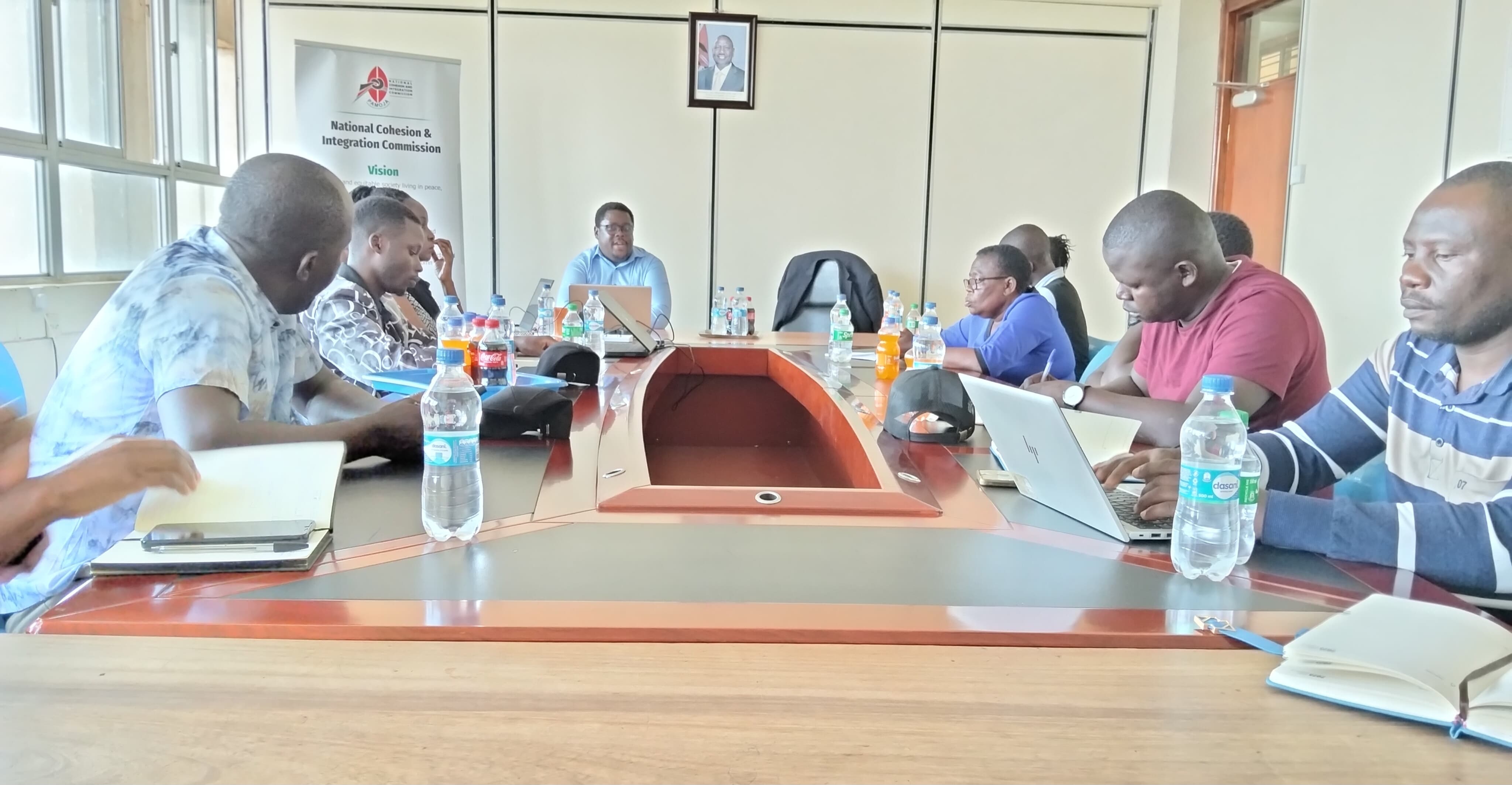
 NCIC Nyanza Regional Coordinator Castro Baraza chairs a preparatory meeting for the International Day of Peace celebrations to be held in Kisumu./KNA
NCIC Nyanza Regional Coordinator Castro Baraza chairs a preparatory meeting for the International Day of Peace celebrations to be held in Kisumu./KNA
A historic peace initiative is underway to end one of Kenya’s longest-running inter-ethnic conflicts, as Kisumu and Kericho counties prepare to demarcate the volatile Sondu boundary.
The exercise, to be carried out by the Independent Electoral and Boundaries Commission (IEBC) and the Survey of Kenya (SOK) between September 12th and 14th, is expected to culminate into a landmark peace deal to be witnessed by President William Ruto and former Prime Minister Raila Odinga.
According to the National Cohesion and Integration Commission (NCIC) Nyanza Regional Coordinator Castro Baraza, the signing, which will mark the end of the decades-old conflict, will coincide with the United Nations (UN) International Day of Peace national celebrations to be held in the border town of Sondu on September 21, 2025.
Baraza said the development follows months of behind-the-scenes negotiations involving county leaders, elders, security teams, and technical experts.
"Last year, NCIC held a meeting at a neutral ground and brokered a deal between Kisumu Governor Prof. Anyang Nyong'o and Kericho Governor Prof. Erick Mutai to tame perennial conflicts on the border," he said. So far, the two leaders have constituted teams to spearhead the exercise, he added.
He said the teams, comprising elders and professionals, would work hand in hand with the IEBC and SOK team to map the border.
The border, contested since colonial times, has been the epicenter of ethnic tensions, deadly retaliatory attacks, cattle rustling, and displacement, with the earliest documented conflict dating back to 1927.
Decades of unrest between the communities living along the border, especially in Sondu, Nyakach, Soin, and Sigowet have claimed dozens of lives and left scars that peace architects now hope to finally heal.
Baraza said the teams that have been engaging have agreed to use the 1961 boundary beacons left behind by the colonial administration to delineate the border.
"During our meetings, some of the elders from both communities came with maps dating back decades. Notably, the maps from both sides were found to align, offering a basis for consensus," he said.
In a poignant gesture to honour those lost in the conflict, Kisumu and Kericho governors have agreed to each donate 2–3 acres of land to establish a Peace Park and Monument at Sondu, Baraza revealed.
He said the site would feature an ICT hub, a playground, a peace resource center, and a monument engraved with names of victims, serving both as a memorial and a symbol of unity.
Ahead of the critical exercise and celebrations, NCIC and partners, have lined up a number among them a soccer tournament and marathon pitting participants from the two counties, Baraza said.
The process will also include community sensitization forums, as both counties seek to ensure that residents understand and accept the outcomes of the boundary process.
Once concluded, the peace effort will mark one of the most comprehensive and inclusive conflict resolution initiatives in Kenya’s recent history, drawing on government institutions, traditional knowledge, and bipartisan political will.











